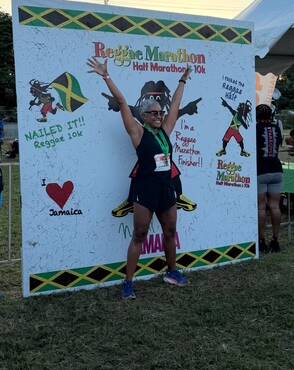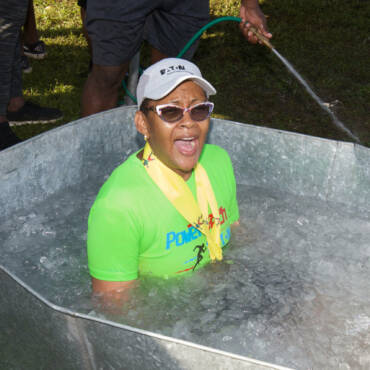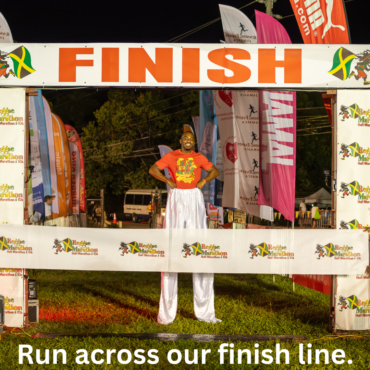Since you’re getting ready to run in the Reggae Marathon (or maybe the Half Marathon or the 10K), chances are you’re thinking about which shoes you’re going to wear on race day. As you weigh the more traditional options (racing flats, motion control, stability, etc.), there’s a small enthusiastic cadre of runners that’s taken a different approach altogether. These intrepid runners forego running shoes altogether, opting instead for minimalist footwear or sometimes no footwear at all. Like me, for example.
A little over a year ago, after discovering a wonderful book called Born to Runby Christopher McDougall (a book so well written, you’d enjoy it even if you weren’t a runner), I stopped wearing running shoes and began a six month transition from wearing Vibram FiveFingers to running completely barefoot. In very short order, twenty-plus years of chronic knee pain disappeared and I’ve never enjoyed my running more.
Runners look to running shoes for injury prevention but after reviewing decades worth of anecdotes and data, iconoclastic thinkers like McDougall and Harvard Professor Daniel Lieberman have raised an intriguing question: Are running shoes causing injuries instead of preventing them? There’s growing evidence that — for many runners — the answer is yes.
The running shoe industry is just a few decades old but has marketed itself so well that the idea of running without running shoes seems radical if not outright dangerous. You don’t have to think about it too long, however, to realize that humans have been running without running shoes a lot longer than we’ve been running with them. And, of course, the barefoot training histories of Kenyan and Ethiopian runners are well know.
For a fairly thorough explanation of the theory behind barefoot running, a good place to start is Dr. Lieberman’s YouTube video. The basic idea is that runnings shoes interfere with proper running form, causing stress and shock in places (like knees, for example) that weren’t designed for shock absorption. Here’s the really fascinating part: Runners with bad form will usually correct their mistakes immediately by simply taking their shoes off! It is the improved form — not being barefoot, per se — that reduces injury . But it’s the elimination of running shoes that makes better form virtually automatic.
Fixing your stride isn’t the only benefit of barefoot running. Many runners report feeling more connected with their running and some say that it brings a child-lie joy back to this most basic of athletic endeavors. (My own favorite ancillary benefit of barefoot running is the enormous entertainment value in watching the faces of oncoming runners and walkers when they notice that you aren’t wearing shoes.)
If the idea of hitting the road without anything on your feet is more than you’re ready to consider, though, the benefits of barefoot-style running are still available to you… you’ll simply have to work a little harder to feel your body and achieve an optimum stride. There are several well known running methodologies that embrace the basic elements of the barefoot style. You can read this article for some basics, then look here, here, and here.
If your current running program is working well for you, then feel free to file all of this away for further consideration at a later date. (Statistics indicate that, if you’re like most runners, you’re going to get injured within the next year and a half or so.) If your body is telling you that it’s tired of the pounding, though, the good news is that you might be able to run with fewer injuries (and maybe even a little faster, too) if you get rid of the over-engineered running shoes and run with nothing — literally nothing — between your feet and the road.
——————————————
This post was from our Guest blogger, George Colombo who publishes a blog on natural running, Natural Stride Sports
Until next time…
Chris Morales, that running guy



